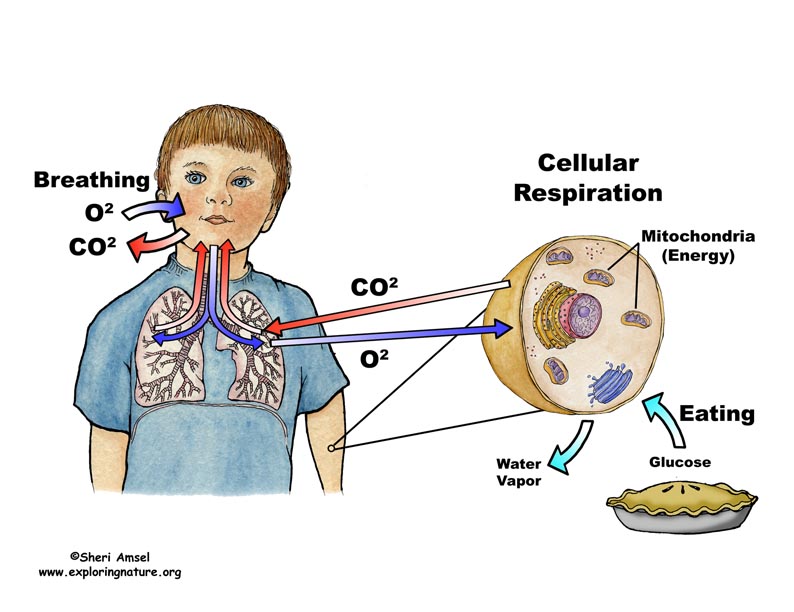

Within each eukaryotic cell, the membranes of 1000-2000 mitochondria sequence enzymes and electron carriers and compartmentalize ions so that cellular respiration proceeds efficiently. More than 20 kinds of enzymes carry out cellular respiration! If you also recall that membranes within organelles often sequence enzymes for efficiency, as in chloroplasts for photosynthesis, you will not be surprised that a specific organelle, the mitochondrion (Figure 6), is also a necessary condition of cellular respiration - at least in eukaryotes.įigure 6: Mitochondria are membranous organelles which sequence enzyme and electron carrier molecules to make cellular respiration highly efficient. What necessary condition initiates the slow burn that is cellular respiration? Recall that enzymes are highly specific proteins which ”speed up” chemical reactions in living cells. A spark or match would damage or destroy living tissue. For the campfire, we indicated above the arrow that a necessary condition was a spark or match to start the reaction. This equation for cellular respiration is not quite complete, however, because we can easily mix air and glucose sugar (even adding ADP and Pi) and nothing will happen. We could write our understanding of this energy-releasing chemical reaction up to this point as: In other words, burning is a chemical reaction. As energy is transformed, so are the compounds that make up the fuel. Another way to describe this energy transformation is to say that burning releases the energy stored in fuel. Fire merely transforms the energy stored in its fuel – chemical energy – into light and heat. However, it cannot ”create” energy (remember that energy cannot be created or destroyed). You know that a fire produces light and heat energy. However, do you know why you need oxygen?įigure 4: Analyzing what happens when wood burns in a campfire is a good way to begin to understand cellular respiration. A constant supply of oxygen gas is clearly important to life. Other forms of life employ different types of respiratory organs: fish and aquatic amphibians and insects flaunt gills, spiders and scorpions develop ”book lungs,” and terrestrial insects use an elaborate network of tubes called tracheae, which open via spiracles, as shown in Figure 2 and Figure 3. The mammalian respiratory system, shown in Figure 1 features a diaphragm, trachea, and a thin membrane whose surface area is equivalent to the size of a handball court - all for efficient oxygen intake. Breathing, also known as respiration, is essential for human life, because the body cannot store oxygen for later use as it does food. You know that humans deprived of oxygen for more than a few minutes will quickly become unconscious and die. To describe how some of the energy in glucose is transferred to ATP in the cytoplasm, without oxygen.To explain why biologists consider glycolysis to be one of the oldest energy production pathways.To recognize that glycolysis is the first and most universal of three stages in cellular respiration.To show how carbon and oxygen atoms cycle through producers, consumers, and the environment.To compare cellular respiration to photosynthesis.To briefly describe the role of mitochondria in producing ATP.

To analyze the chemical equation for cellular respiration.To compare cellular respiration to burning.To trace the flow of energy from food molecules through ATP to its use in cellular work.To clarify the relationship between breathing and cellular respiration.


 0 kommentar(er)
0 kommentar(er)
